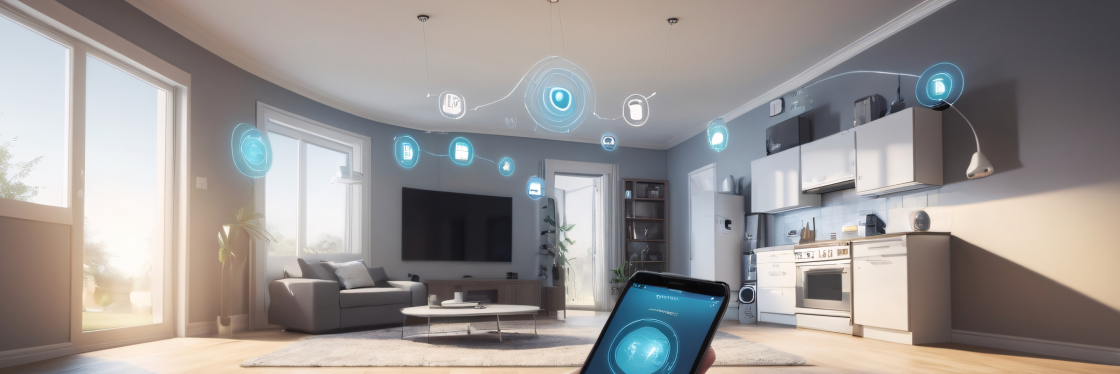Smart Home Basics: What You Need to Know Before Getting Started
Table of Contents
- 1. What is a Smart Home?
- 2. Why You Should Consider a Smart Home
- 3. Key Smart Home Devices for Beginners
- 4. How to Set Up Your Smart Home: A Simple Guide
- 5. Top Benefits of Smart Homes
- 6. Smart Home Security & Safety Tips
- 7. Smart Home Challenges to Know
- 8. Expert Tips and Actionable Ideas
- 9. Frequently Asked Questions
1. What is a Smart Home?
A smart home is a living space equipped with internet-connected devices—from lights and fans to security cameras and voice assistants—that you control remotely using your smartphone or even by speaking. These devices can work together through automation, making daily life simpler, safer, and more efficient.
2. Why You Should Consider a Smart Home
Convenience: Control household devices with just your phone or voice.
Security: Keep a close eye on your home with cameras and instant alerts.
Energy Savings: Smart thermostats and bulbs help cut unnecessary power use.
Accessibility: Makes daily chores easier, especially for kids, seniors, or differently-abled family members.
Modern Lifestyle: Enjoy the comfort and fun of automated routines—like waking up to your favourite playlist!
3. Key Smart Home Devices for Beginners
Start with the basics and expand:
Smart bulbs: Change brightness or colour and schedule lighting—no manual switches.
Smart plugs: Turn old devices ‘smart’ by plugging them in.
Voice assistants: Gadgets like Amazon Alexa or Google Home respond to voice commands.
Security cameras & doorbells: Watch live video and get alerts on your phone.
Smart fans or ACs: Adjust settings remotely, ideal for hot Indian summers.
4. How to Set Up Your Smart Home: A Simple Guide
Step 1: Choose an Ecosystem
Pick one hub system (Amazon, Google, or Apple) for smooth operation. Eg: If you use Android, Google Home is easy to set up.
Step 2: Install Starter Devices
Plug in smart bulbs or smart plugs where needed. Download the company’s app and follow simple on-screen steps.
Step 3: Connect Devices and Set Routines
Link devices in one app. Name your rooms for easy voice control like “Turn off kitchen lights.” Set up daily automations such as lights switching on at sunset.
Step 4: Experiment and Expand
Try adding new gadgets as you get comfortable. Most brands offer setup videos and help online!
5. Top Benefits of Smart Homes
Time savings: Automate repetitive tasks—never worry if lights are on!
Lower electricity bills: Devices only run when required.
Remote access: Control or monitor your home from anywhere.
Personalisation: Customise automation for your lifestyle—like setting the morning lights or relaxing music.
Safety: Remote smoke or gas leak alerts, and instant notifications of unusual activity.
6. Smart Home Security & Safety Tips
Use strong, unique passwords for each device.
Update software regularly to avoid hacking risks.
Always buy from trusted brands.
Secure your home Wi-Fi—a safe network protects all devices.
For extra safety, activate two-factor authentication in your smart device apps.
7. Smart Home Challenges to Know
Compatibility: Some gadgets only work with certain hubs (like Google or Amazon).
Internet dependence: If Wi-Fi is down, some devices can’t work remotely.
Learning curve: Apps may take a few days to master, but become simple with use.
8. Expert Tips and Actionable Ideas
Start small: Begin with lighting or plugs, then add more as you get familiar.
Plan device placement: Place cameras at entrances and smart bulbs in rooms you use most.
Group devices by room: Easy voice or app control—no need to remember awkward device names.
Use automations: Create routines for daily actions, like turning on porch lights at sunset.
9. Frequently Asked Questions
1. Do smart homes use a lot of electricity?
No, most smart devices are designed to cut unwanted power use and lower bills.
2. Will smart home gadgets work during power cuts?
Smart features need power and internet. However, basic manual controls (like switches) still work.
3. Are smart devices safe from hackers?
Choose strong passwords, update software, and stick with trusted brands to reduce risks.
4. Can seniors and children use smart homes?
Yes! With simple setups and voice assistants, smart homes are easy for all ages and abilities.
5. Is it expensive to set up a smart home?
You can begin with just one or two affordable devices and expand step-by-step—no big cost or expert help required.
